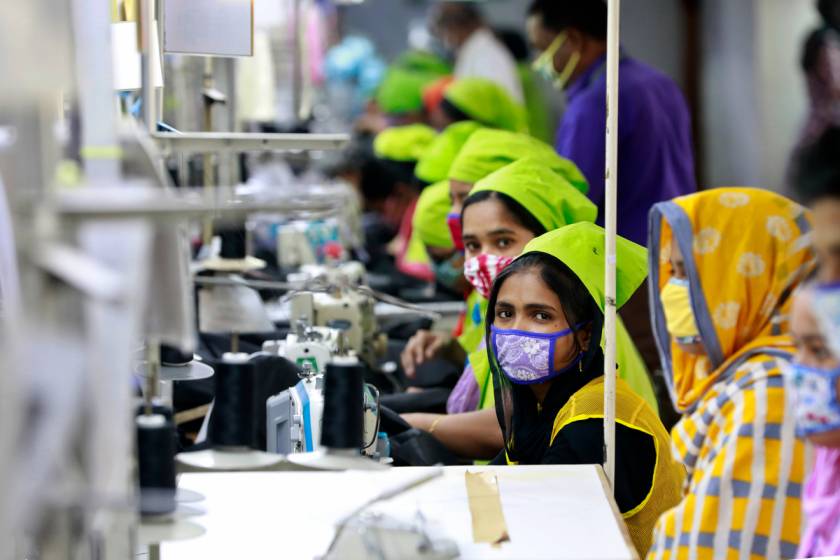Revisiting The Bangladesh Accord: An Attempt To Secure Worker’s Right to Safety



Worker’s safety should be a prime consideration for every garment factory and a basic right for every worker. Production is impossible without the skill and efficiency of the workers but there have been a startling number of accidents, poisoning incidents, and eventual death of clothing factory workers over the last decade in Bangladesh.
Since 2005, the deaths of more than 1800 men and women have been recorded who were killed at work while manufacturing clothes in a series of factory fires and collapses. Such incidents are more than mere work hazards and cannot be overlooked under any circumstances.
There remains no place to question the fact that it should be the responsibility of every brand and factory owner to ensure the safety of their workers and promote a healthy work environment.
What is the Bangladesh Accord?
The Accord on Fire and Building Safety in Bangladesh was signed on 15th May 2013. It was a five-year independent, legally binding agreement between 200 global brands, Bangladeshi trade unions, and Global Union Federations designed to build a safe and healthy Bangladeshi Ready Made Garment (RMG) Industry.
4 Important things to know about the Bangladesh Accord
1. The agreement was created following the aftermath of the Rana Plaza building collapse that led to the death of more than 1100 people and injured more than 2000. The tragic incident took place on 24th April 2013, in the Savar Upazila of Dhaka District, Bangladesh.
The building that collapsed was eight stories high. Reports maintain that the owner was warned about the fragility of the building but he ignored it.

2. An implementation plan was agreed upon in June 2013, leading to the incorporation of the Bangladesh Accord Foundation in Netherlands in October 2013. The agreement consisted of six key components:
- A five-year legally binding agreement between brands and trade unions to ensure a safe working environment in the Bangladeshi RMG industry
- An independent inspection program supported by brands in which workers and trade unions were to be involved
- Public disclosure of all factories, inspection reports and corrective action plans (CAP)
- A commitment by signatory brands to ensure sufficient funds are available for remediation and to maintain sourcing relationships
- Democratically elected health and safety committees in all factories to identify and act on health and safety risks
- Worker empowerment through an extensive training program, complaints mechanism, and right to refuse unsafe work.
3. A second Accord, known as the Transition Accord, was signed in 2018. This three-year agreement built on the success of the landmark 2013 Accord by extending protection to millions of Bangladeshi garment workers. The new agreement took effect in May of 2018.
The program built on the work of the preceding Accord and the National Tripartite Plan of Action on Fire Safety and Structural Integrity in the garment sector of Bangladesh (NTPA).
The current Accord model is the only credible mechanism for brands to verify that their products are made under safe conditions.
4. The 2018 Accord included new elements like recognizing the importance of Freedom of Association, including enhanced protection for workers whose factories were closed or relocated due to safety issues.
A possibility was suggested to expand the scope of the agreement to cover categories of factories not originally covered, such as factories making related products like footwear and home textiles.
Additionally, the 2018 Accord incorporated lessons learned over the past four years to ensure effective implementation, such as a clarified dispute resolution process.

The Bangladesh Accord is the first modern legally-binding agreement between workers, factory managers, and apparel companies. The Worker’s Resource Centre (WRC) continues to play a major role in implementing and enforcing the accord.
Worker’s safety is never a secondary matter and what the Bangladesh Accord achieved is a new milestone in favor of the worker’s safety.
Notably, the agreement is supposed to run out on 31st May 2021, which makes this a good time to look back at the success of the Accord.
Once again, the participating nations need to revise and reinstate yet another legally binding agreement that would continue to ensure the safety of the workers by ensuring factory owners and brands continue to remain accountable for the workers’ well-being.
Such accountability is more important now than ever, since the workers are already struggling with the challenges posed by the Covid-19 pandemic.



















